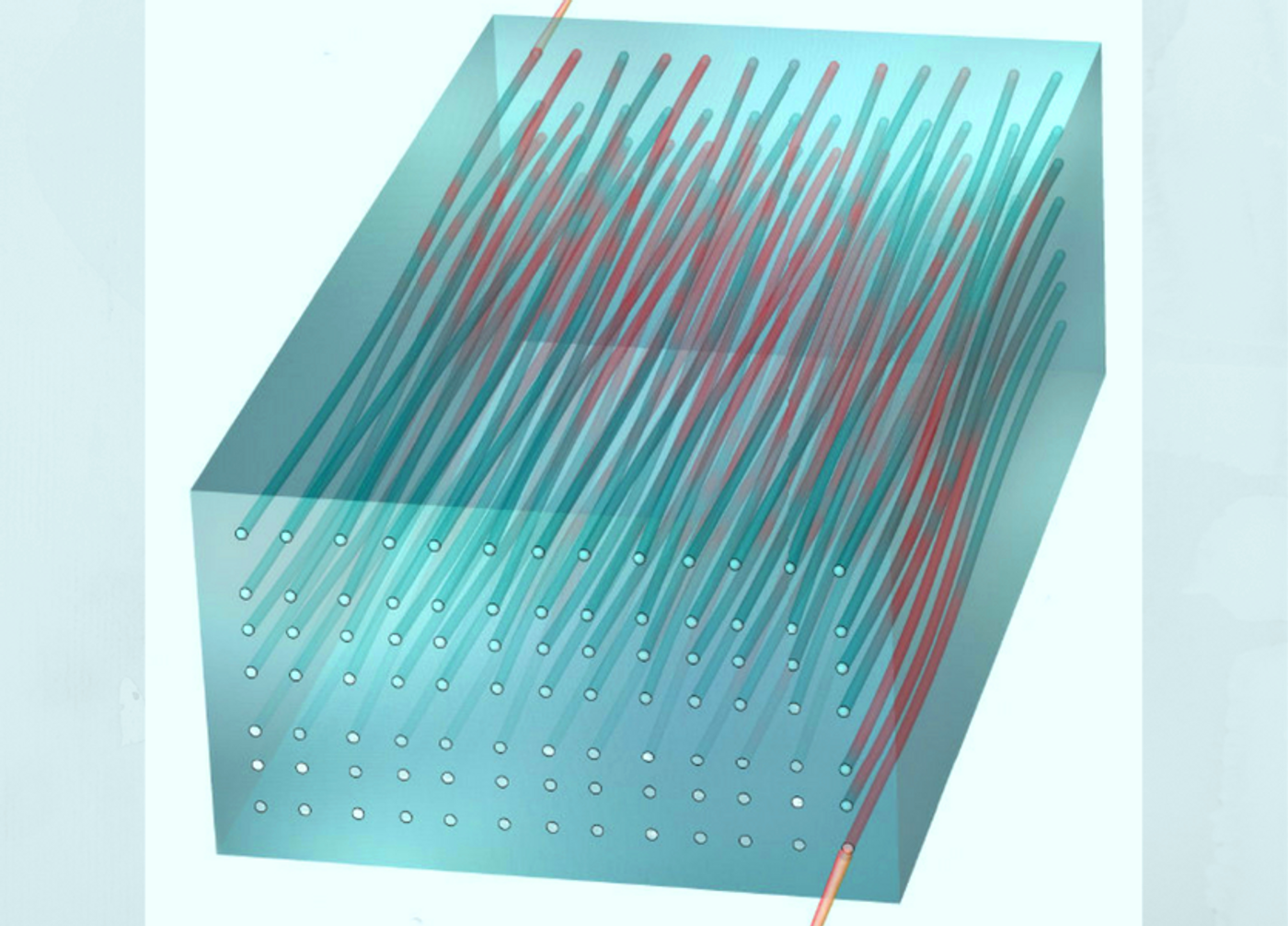4-D Genie Out Of 2-D Bottle
According to a recently published study in Nature, an international team of researchers has demonstrated a way to observe physical phenomena known as quantum Hall effect, which was theorized to only exist in four-dimensional systems, in analogous real-world experiments.
If you find the last sentence confusing or mind-blogging, don't worry. The elaborate feat was indeed extraordinary because it was achieved with knowledges and efforts from three frontiers of physics: quantum mechanics, topology, and dimensionality.
Let us break down the news into a handful of chewable pieces. Hall effect refers to the production of a transverse electric field in a solid material, when the charged particles it carries move in a two-dimensional plane to an applied magnetic field perpendicular to the current. The magnetic field generates a Lorentz force, which deflects the particles in the direction orthogonal to their motion. This manifests in the appearance of a transverse voltage difference (Hall voltage).
Quantum Hall effect (or integer quantum Hall effect) is a quantum-mechanical version of the Hall effect. In 1980, Klaus von Klitzing made a remarkable observation: at a low temperature close to 4 Kelvin and powerful magnetic fields (in the order of 15 teslas), the hall voltage in two-dimensional electron systems can be quantized. (Being quantized means a characteristic is fixed to a fundamental constant of nature and cannot change.) He received 1985 Nobel Physics prize for this discovery.
In modern physics, string theory, a framework that tries to reconcile Einstein's ideas with the laws of quantum mechanics, postulates that there are up to 10 dimensions in our universe, contradicting the commonly accepted 3 (spatial) + 1 (temporal) dimension model. But of course, the unknown spatial dimensions only exist in the microscopic, subatomic realm, which quantum mechanics is supposed to take full control of.
How can one create a two-dimensional electron system? When an electric charge is sandwiched between two surfaces, the charge behaves effectively like a two-dimensional material, meaning its mobility is restricted to become linear. Since its discovery, the quantum Hall effect was not expected to exist in the higher-dimensional material. But in 2000, it was shown theoretically that a similar quantization could be observed in four-dimensional space.
To be clear, physicists cannot (at least not yet) create or access the 4th-dimension in reality. However, they can model this four-dimensional space using the so-called waveguide arrays. Within the arrays, each waveguide acts as a tube or conduit for photons. The collection of tubes is inscribed closely spaced through the high-quality glass, using a powerful laser.
In the study, to emulate a four-dimensional system, the researchers encoded two "synthetic dimensions" into the positions of the waveguides—the intricate patterns of the waveguide positions as a manifestation of the higher-dimensional coordinates. The researchers then measured how light flowed through the device and found that it behaved precisely according to the predictions of the four-dimensional quantum Hall effect.
"When it was theorized that the quantum Hall effect could be observed in four-dimensional space, it was considered to be of purely theoretical interest because the real world consists of only three spatial dimensions; it was more or less a curiosity,” said Mikael Rechtsman, professor of physics at the Pennsylvania State University and an author of the paper. His team has shown that four-dimensional quantum Hall physics can be emulated using photons—particles of light—flowing through a waveguide array. Rechtsman said: "Our observations, taken together with the observations using ultracold atoms, provide the first demonstration of higher-dimensional quantum Hall physics."
How can the higher-dimensional physics benefit science and technology in our normal-dimensional world? Quasicrystals—metallic alloys that are crystalline but have no repeating units and are used to coat some non-stick pans—have been shown to have “hidden dimensions”. Their structures can be seen as projections from higher-dimensional space into the real, three-dimensional world. Furthermore, insights into higher-dimensional physics can guide the design of novel computing and photonic devices.
Steven Girvin - Quantum Hall Effect. Credit: Institute of Quantum Computing
Source: phys.org









